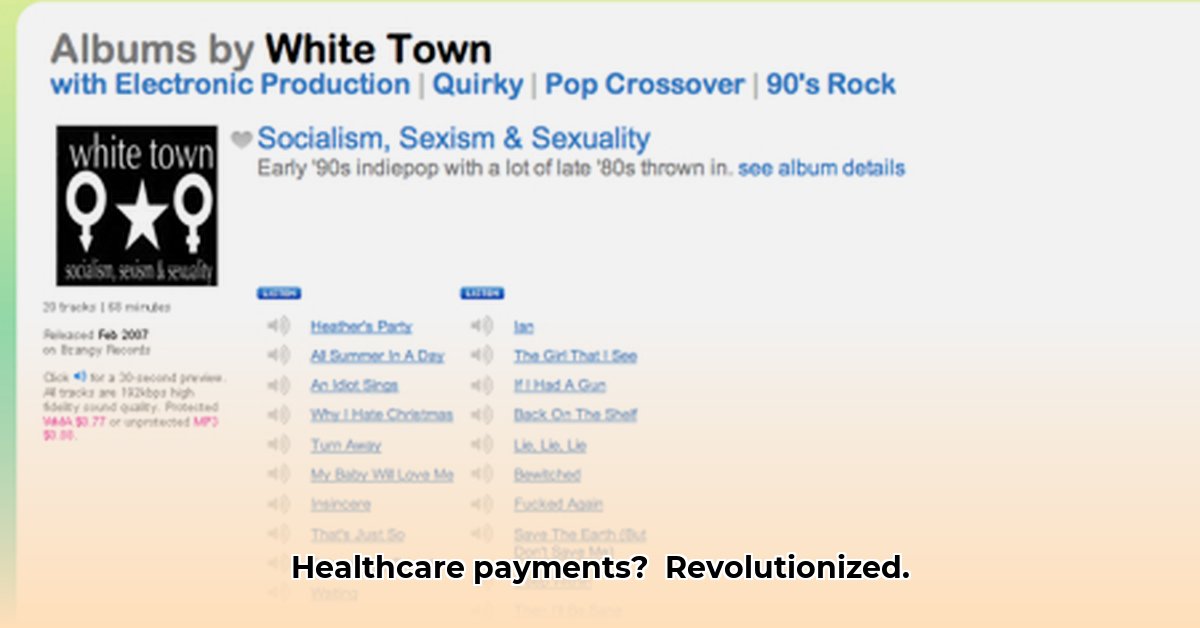
PayPlay, or performance-based payment in healthcare, is revolutionizing the industry. It shifts from the traditional "fee-for-service" model (reimbursing for each service rendered) to rewarding providers based on demonstrable improvements in patient health and system efficiency. This innovative approach, a core component of healthcare fintech, promises significant benefits, but also presents challenges that require careful navigation. How can we harness PayPlay's potential while mitigating its risks?
Understanding PayPlay Mechanics in Healthcare
PayPlay operates on a simple principle: providers receive increased compensation when they achieve pre-defined, measurable improvements in patient health. These improvements could include reduced hospital readmissions, enhanced patient satisfaction scores, or better overall health metrics. The process typically involves defining clear, outcome-focused goals, utilizing technology to track progress, and calculating payments based on results. This incentivizes efficient, high-quality care, moving beyond simply counting procedures performed. But how effective is it in practice? Are there any hidden costs associated with implementation?
PayPlay and the Digital Transformation of Healthcare
Technology is the backbone of PayPlay. Digital platforms capture and analyze data essential for tracking patient progress and calculating payments accurately and transparently. This automation surpasses the limitations of manual processes, delivering faster calculations and reducing costs. The shift from paper charts to digital systems improves efficiency while ensuring clarity and fairness. What specific technologies are most effective in supporting PayPlay initiatives? How can data security concerns be addressed effectively?
Benefits of Implementing PayPlay
The advantages of implementing PayPlay extend across the entire healthcare ecosystem:
Improved Patient Outcomes: By incentivizing superior care, PayPlay fosters preventative measures and better treatment plans, driving improvements in patient health and wellbeing.
Increased Efficiency: Focusing on tangible results streamlines processes, optimizing resource allocation and reducing waste within healthcare systems.
Lower Healthcare Costs: While seemingly counterintuitive, PayPlay's emphasis on effective care reduces costly readmissions and unnecessary procedures, ultimately contributing to cost savings.
Enhanced Transparency and Accountability: Data-driven payment systems increase transparency, facilitating performance monitoring and promoting accountability across all stakeholders.
Data-Driven Decision Making: The wealth of data generated enables informed strategies, allowing for early problem detection and continuous improvement in care delivery.
Challenges and Mitigation Strategies for PayPlay
While promising, PayPlay implementation faces several significant hurdles:
Data Security and Privacy: Handling sensitive patient information demands robust security protocols to prevent data breaches and maintain patient privacy. How can we balance data utilization with the critical need for data security?
Metric Definition: Selecting the right metrics for performance evaluation is paramount. Metrics must be meaningful, easily measured, attainable, and directly linked to improved patient outcomes. How do we determine the most impactful metrics for a wide range of care settings?
Algorithmic Bias: The use of AI and algorithms in data analysis necessitates constant vigilance against bias. Systems must ensure fair treatment across all demographic groups. How can we ensure fairness and equity in PayPlay’s algorithmic processes?
Interoperability Challenges: Seamless data sharing between various healthcare systems requires standardization and compatibility across platforms. How can interoperability be achieved efficiently and effectively?
Regulatory Compliance: Navigating complex healthcare regulations requires ongoing effort to maintain compliance with all applicable laws. How do we ensure continuous compliance within the evolving regulatory landscape?
PayPlay Use Cases in Healthcare Fintech
PayPlay finds application across a broad spectrum of healthcare settings:
Value-Based Care (VBC): PayPlay is becoming increasingly integral in VBC initiatives, with insurers linking payments to providers demonstrating high-quality, cost-effective care.
Chronic Disease Management: Incentivizing proactive care via PayPlay significantly improves outcomes and reduces hospitalizations for chronic conditions such as diabetes or heart disease.
Mental Healthcare Enhancement: PayPlay can meaningfully improve mental healthcare by fostering patient engagement and tracking measurable outcomes.
Remote Patient Monitoring (RPM): The use of RPM technology enables remote patient monitoring, facilitating early problem detection, preventing readmissions, and improving overall patient care, all of which are rewarded through PayPlay.
The Future of PayPlay
The future of PayPlay is likely to be shaped by:
Advanced AI and Machine Learning: More sophisticated analytics will enhance transparency and fairness, leading to more accurate performance measurement and improved identification of areas for improvement. “Dr. Anya Sharma, Chief Data Scientist at HealthMetrics, emphasizes the importance of using AI to continuously adapt payment models to reflect changes in the healthcare landscape.”
Increased Patient Feedback Integration: Incorporating patient feedback into performance metrics will further enhance fairness and better represent individual needs.
Strengthened Data Security: Prioritizing data security and privacy will remain critical to maintaining patient trust and complying with regulations.
Enhanced Stakeholder Collaboration: Successful PayPlay implementation depends on strong collaboration between providers, payers, and technology developers.
In conclusion, PayPlay represents a paradigm shift in healthcare financing, promising to improve patient care, boost overall efficiency, and foster a more sustainable healthcare system. While challenges persist, the potential benefits are substantial, making PayPlay a crucial development in the future of healthcare fintech.